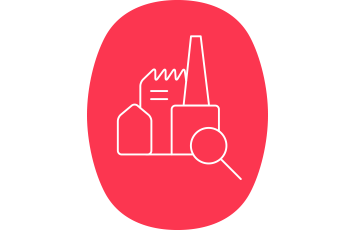
Power in port
Shore-to-Ship power (SSP), or the supply of electricity to vessels in port, has become a key issue in the fight to reduce exhaust emissions in high-density areas. New technical standards are under discussion in this complex area which covers both marine and land technology.
Exhaust and noise pollution
The supply of power to a ship in port plays an important role in efforts to reduce greenhouse gas emissions in built-up areas.
In order to minimise emissions and noise disturbance which could affect the local population, ships are connected to the land-based electricity grid in port, shutting down the vessel’s own power generation.
Increasingly, ships are connecting to a green energy grid in port, thereby completely eliminating exhaust gas emissions. However, there remain challenges in achieving this goal.
Between land and water
Ship-to-shore power, or shore supply, constitutes the boundary between two worlds, marine and land energy, and requires careful knowledge of both sectors.
Power installations at berth are technically sophisticated, and must provide enough power to supply several vessels simultaneously. Distribution systems and power receptors must also be harmonized so that a ship can connect in each port with its own onboard equipment, while the installation must also cater for many different types of vessel.
Providing industry standards
In order to guarantee the effective safety and functionality of installations, appropriate technical standards are needed.
ES-TRIN (the European Standard laying down Technical Requirements for Inland Navigation vessels) offers several existing standards in this area, which have been updated in recent years to reflect the increasing power levels deployed in shore supply.
ES-TRIN refers in its Article 10.08 to European Norms (EN). Several standards are listed within, depending on the nominal power of the shore installation: EN15869-1: 2019, EN15869-3, EN16840.
In addition, the standards address the technical requirements for electrical shore connection for inland navigation vessels operating with rated currents up to 125A, as well as those with maximum operating currents above 250A, with a particular focus on the on-board unit for the lower range of operation.
These European standards are complemented by Bureau Veritas’ own Inland Rules (NR217).
Government debate
The importance of this issue for both governments and non-government organisations was recently demonstrated by an online workshop titled '' Shore Power at Berths'', organized by the Central Commission for Navigation on the Rhine.
The conference was attended by more than 160 participants from 14 European countries, including several government delegations.
As part of its commitment to advancing standards in this area, Bureau Veritas submitted a paper to the conference. The presentation set out the standards currently required by ES-TRIN, while also outlining both the commonalities and differences with Bureau Veritas’ own rules in this area.
More information on the conference can be obtained by contacting Ghimar Merhy at Bureau Veritas’ Environment & Technologies department.
Note:
- The supply of power to ships in port is referred to using several terms: Shore Supply or Connection, Alternative Maritime Power (AMP), Shore-to-Ship Power (SSP), and sometimes ‘Cold Ironing’. The term Cold Ironing dates from the era of coal-fuelled ships when iron engines would literally go cold when they were no longer fed in port.











